If you’re a national parks lover who enjoys gardening, collecting wild edibles and foraging, you might wonder if foraging is allowed in the national parks. And, as surprising as it may be, the answer to that question is usually yes.
Although the general removal, disturbance or collection of plants is prohibited in national parks, numerous parks do allow for the gathering of certain (parts of) edible plants and fungi.
The specific regulations for national park foraging, including quantities, types of flora and fungi that can be collected, and harvesting methods, are determined by each park’s superintendent.
Generally speaking, though, foraging in a national park is permitted more often than not, albeit with some, or several, restrictions and limitations.
In fact, more than half of all national parks in the United States allow for some type of foraging. Moreover, some parks even encourage visitors to collect plants, fruits, nuts, seeds, flowers or fungi for personal consumption as part of their management policy.
Even if you’re not an avid gatherer or wild food collector, you may still have done some casual berry picking in summer. You might have harvested apples in fall or even taken part in a mushroom hunt.
Whatever the extent of your previous foraging experience is, it’s fun to know that, while visiting a certain national park, foraging could be part of the things you do there.
Foraging in a national park is a fantastic way to experience the park and really immerse yourself in its natural landscape—by feeling and tasting it. You’re quite literally eating a part of the park, foods that are as organic and delicious as you’ll find anywhere.
This blog post about foraging in the national parks contains affiliate links. You can read more about our Terms of Use / Disclosure here.
Contents
- Best National Parks for Foraging
- 1. Acadia National Park, Maine
- 2. Capitol Reef National Park, Utah
- 3. Crater Lake National Park, Oregon
- 4. Cuyahoga Valley National Park, Ohio
- 5. Death Valley National Park, California
- 6. Denali National Park, Alaska
- 7. Glacier National Park, Montana
- 8. Grand Teton National Park, Wyoming
- 9. Great Smoky Mountains National Park, North Carolina and Tennessee
- 10. Mount Rainier National Park, Washington
- 11. New River Gorge National Park, West Virginia
- 12. Olympic National Park, Washington
- 13. Redwood National Park, California
- 14. Rocky Mountain National Park, Colorado
- 15. Shenandoah National Park, Virginia
- 16. Yellowstone National Park, Idaho, Montana and Wyoming
- 17. Yosemite National Park, California
Best National Parks for Foraging
I’ve compiled a list of many of the best national parks for foraging below. Note, however, that this list is by no means exhaustive. There are many more national parks that allow foraging.
I must also state that the collecting and gathering regulations of the following parks are in effect as of the time of writing. They’re based on each park’s Superintendent’s Compendium, which is updated every year. I recommend that you always check with each park before you start collecting edible plants and/or fungi.
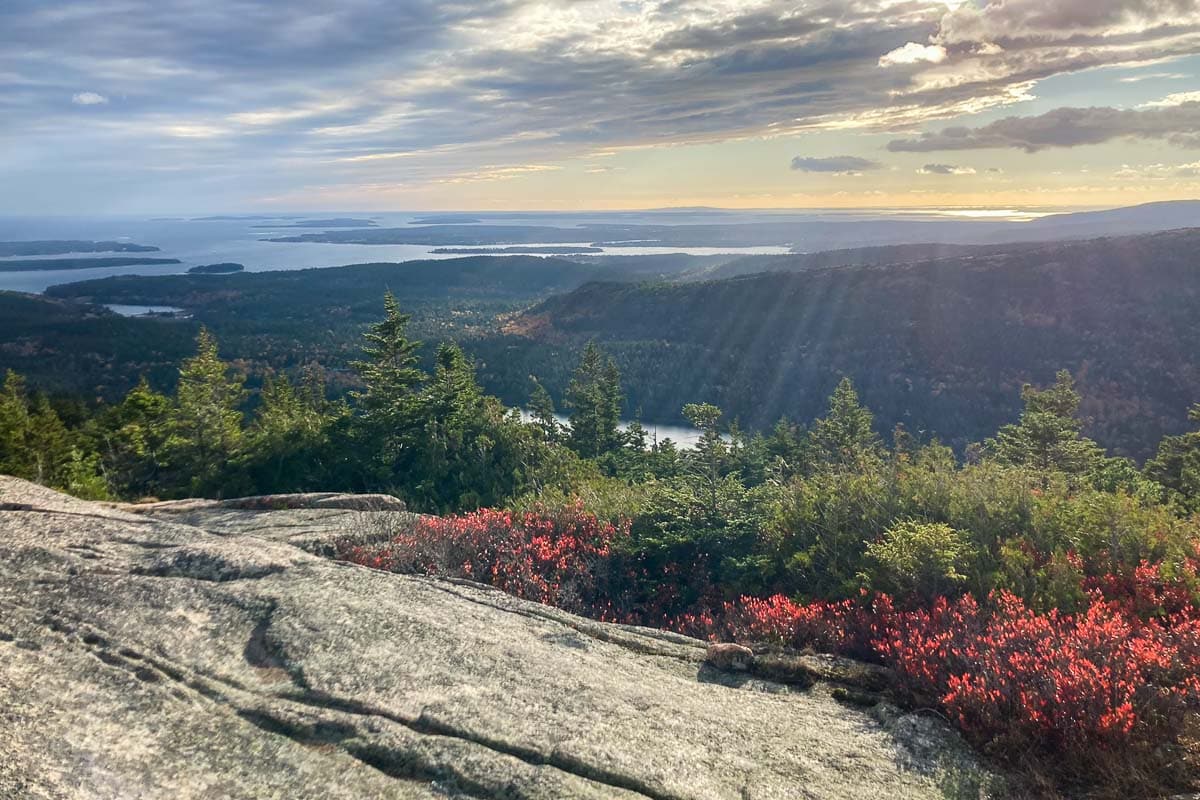
1. Acadia National Park, Maine
The only national park in the Northeast, Acadia National Park allow for the foraging of a pretty wide range of edible plants. You can harvest all edible fruits, berries and nuts for personal use or consumption.
Quantity limits are one (1) dry half gallon of fruits and berries per person per day—a dry gallon is a gallon of whole fruits and berries—and one half (1/2) gallon of unshelled nuts. The foraging limit for apples in Acadia National Park is even higher, up to ten (10) dry gallons per person per day.
See the Acadia National Park Superintendent’s Compendium for more information.
More About Acadia National Park
- Park Website
- Travel Guide
- Topographic Map
- Best Acadia Hikes
- Top Things To Do in Acadia National Park
- Viewpoints
- Accommodation
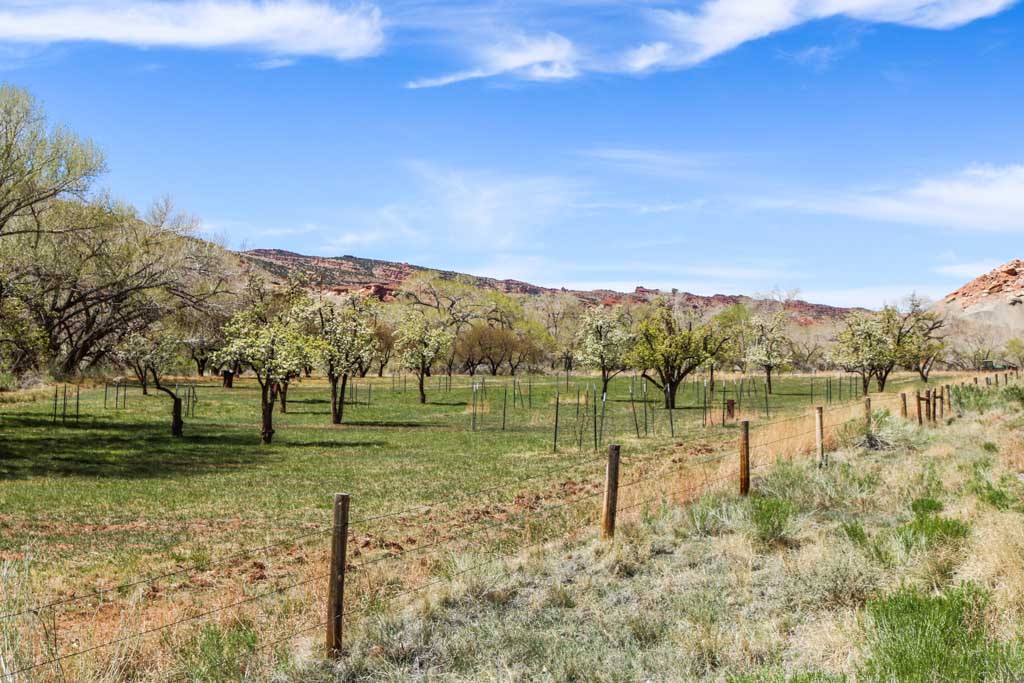
2. Capitol Reef National Park, Utah
Dating back to the late-19th century, the historic orchards of Fruita were established by Mormon pioneers.
Nowadays, these orchards in Capitol Reef National Park are maintained by the National Park Service using the historic production methods that the Mormons themselves used. This includes over-a-century-old cultural irrigation techniques and pruning, mowing and grafting practices.
Not only are the Capitol Reef orchards are open to the public, but you can also pick your own fruit here. From summer through fall, the orchards are ripe with all kinds of fruits, from cherries and apricots to peaches, pears and apples.
Note that there’s a fee for all fruit removed from the orchards. However, if you consume the fruit on-site within the orchards, there’s no fee.
I realize that fruit picking at an orchard isn’t really the same as foraging for wild edible plants. If you’d like to do some foraging in Capitol Reef National Park, though, you’ll be happy to learn that’s allowed, too.
The park permits the collection of wild asparagus, grapes and mulberries for personal consumption. These plants are not native to Capitol Reef and quantities are limited to one (1) pound per person per week.
See the Capitol Reef National Park Superintendent’s Compendium for more information.
More About Capitol Reef National Park
- Park Website
- Travel Guide
- Topographic Map
- Best Capitol Reef Hikes
- Top Things To Do in Capitol Reef National Park
- Accommodation
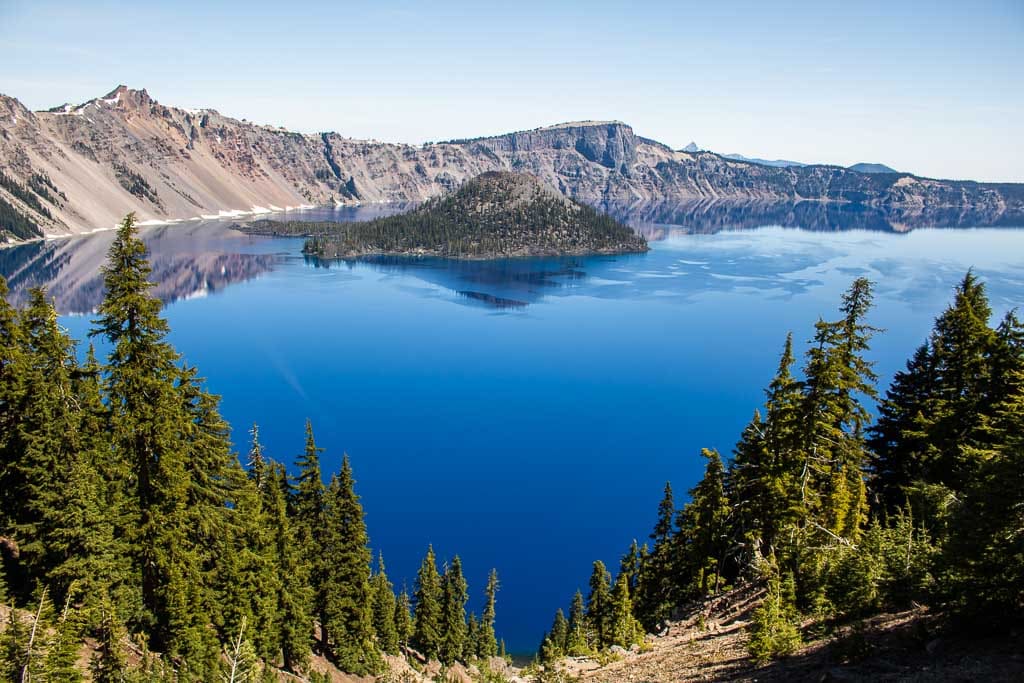
3. Crater Lake National Park, Oregon
Although Crater Lake National Park isn’t necessarily known for its lush landscapes, the park’s forests do produce pretty high quantities of berries.
As such, the park allows for the gathering of up to one (1) quart per person per day of blueberries (Vaccinium species), huckleberries (Vaccinium species), Pacific serviceberries (Amelanchier species) and western thimbleberries (Rubus parviflora).
All picked berries must be consumed within Crater Lake National Park.
“These species are not listed or candidates for federal or state threatened or endangered status. There is not any documented or anecdotal evidence that gathering these berries by hand for personal consumption within the park adversely affects park wildlife, the reproductive potential of these plant species, or otherwise adversely affects park resources,” the National Park Service says.
See the Crater Lake National Park Superintendent’s Compendium for more information.
More About Crater Lake National Park
- Park Website
- Travel Guide
- Topographic Map
- Best Crater Lake Hikes
- Top Things To Do in Crater Lake National Park
- Viewpoints
- Accommodation
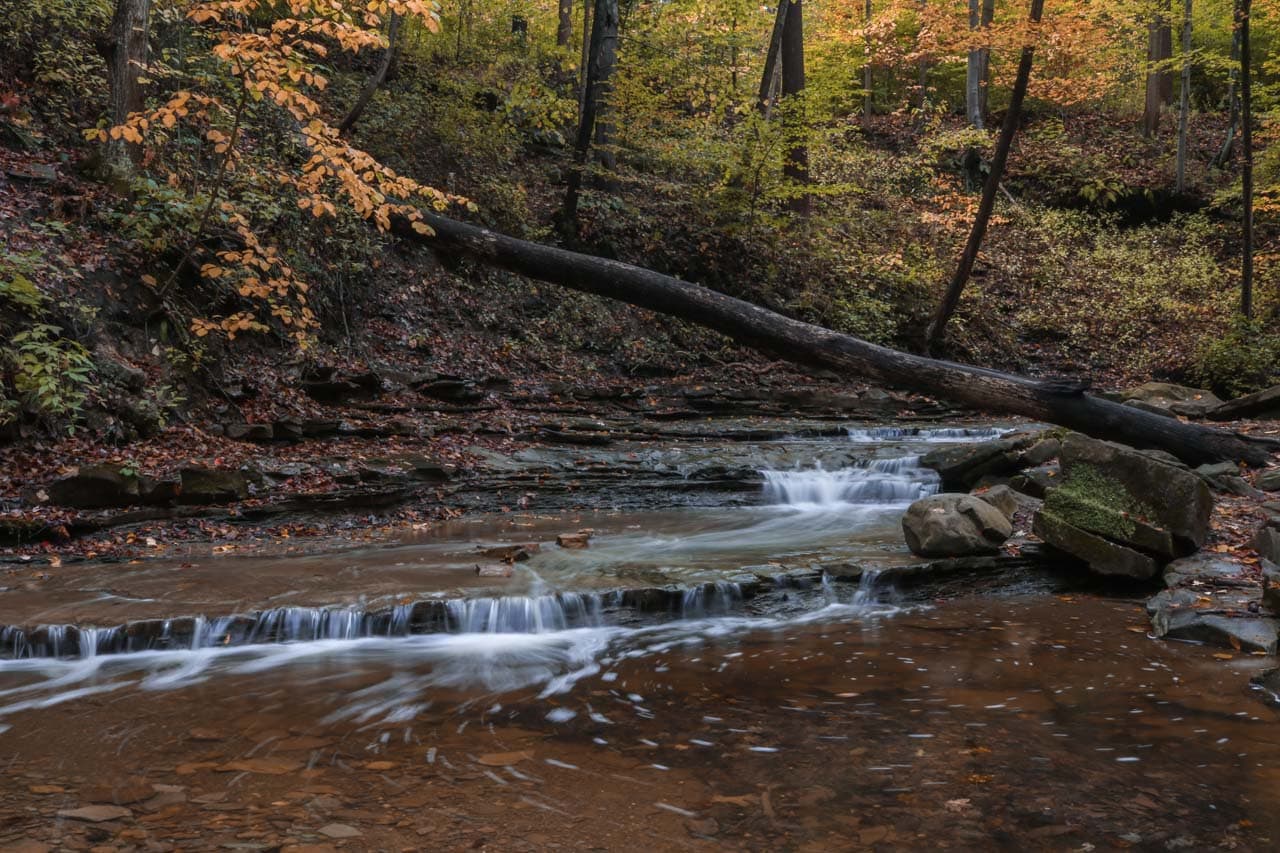
4. Cuyahoga Valley National Park, Ohio
One of the only national parks that encompass still-working farms, Cuyahoga Valley National Park preserves and restores natural features and protects a historic pastoral landscape in Ohio. Besides its beautiful waterfalls, streams and forests, historic farms are a main characteristic of this park.
In addition to buying fresh produce and products from Cuyahoga Valley’s Countryside Initiative farms, you can also forage a bunch of edible wild plants in the park.
Cuyahoga Valley National Park permits visitors to “collect by hand reasonable quantities of edible fruit, berries, or nuts, for personal use or consumption, except from plants that are contained in the Federal or State of Ohio lists of rare, threatened, or endangered species of plants.”
Note that the gathering of mushrooms is strictly prohibited, though.
See the Cuyahoga Valley National Park Superintendent’s Compendium for more information.
More About Cuyahoga Valley National Park
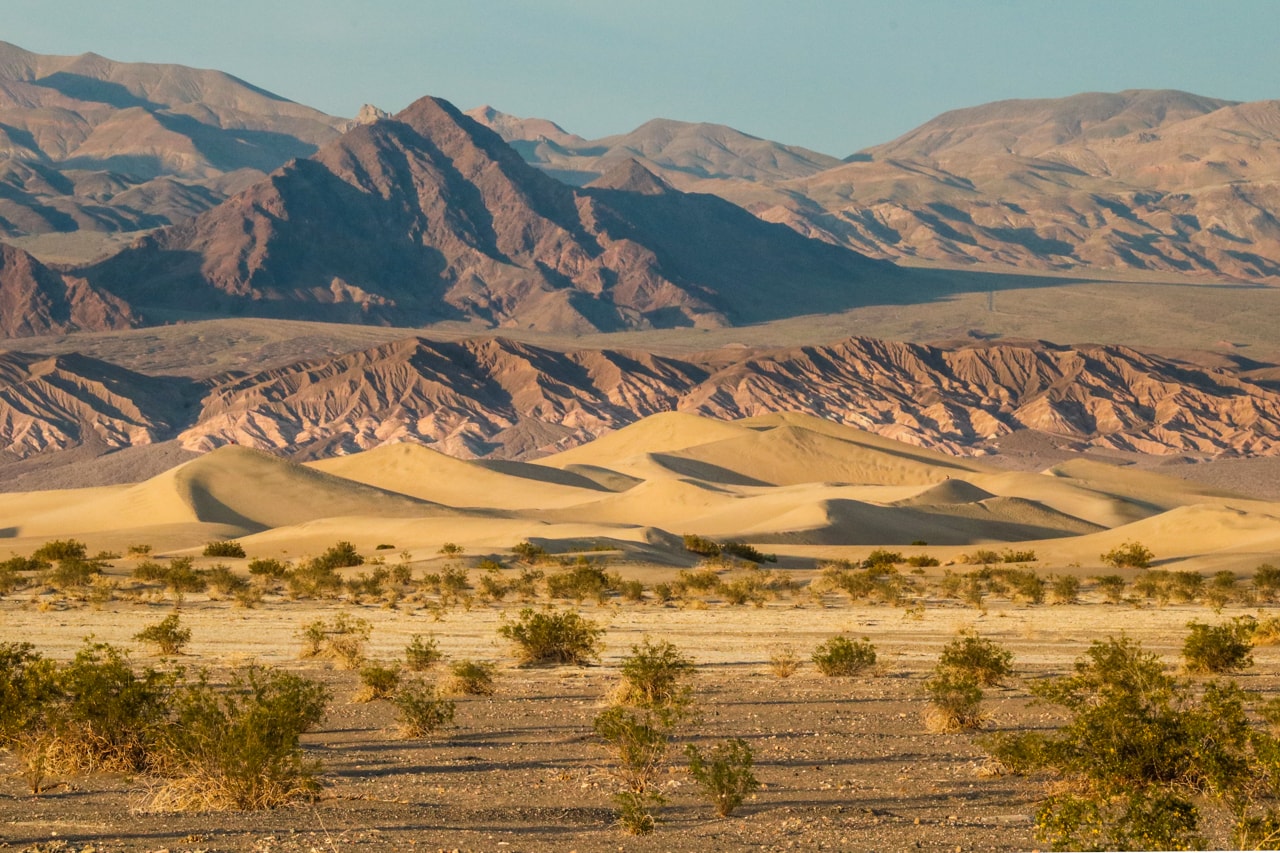
5. Death Valley National Park, California
Its name may not call to mind images of a lush landscape filled with abundant fauna and flora, but Death Valley National Park is very much home to numerous plants and animals.
In fact, the natural bounty in Death Valley is currently sufficient for the park to allow visitors to forage certain edible plant materials.
Specific foods you can legally forage in Death Valley National Park are mesquite beans, pine nuts, grapes and the fruits of non-native plants, such as apples, figs, palms, pomegranates and black walnuts.
These things may be collected in a quantity of less than one (1) quart per person per day. No more than five (5) quarts of each may be collected per person per calendar year.
See the Death Valley National Park Superintendent’s Compendium for more information.
More About Death Valley National Park
- Park Website
- Travel Guide
- Topographic Map
- Best Death Valley Hikes
- Top Things To Do in Death Valley National Park
- Viewpoints
- Accommodation
6. Denali National Park, Alaska
Although its growing season is very short, Denali National Park does produce vast quantities of edible fruits, berries, nuts and mushrooms during its brief summer season.
There’s a plethora of pickable edible plants and fungi in Denali National Park, so much that the park does not have any restrictions on how much you’re allowed to forage. The park even has its own webpage dedicated to berry picking.
You can literally collect as much as you want. The only requirements are that you forage by hand and that the fruits, berries, nuts and mushrooms you pick are for personal use or consumption only.
Especially Denali’s berries are popular among foragers. Both blueberries and lingonberries thrive in Denali. The former are found mainly in the Mountain Vista and Savage River Areas, while the latter abound along the trails near the Denali Visitor Center.
See the Denali National Park Superintendent’s Compendium for more information.
More About Denali National Park
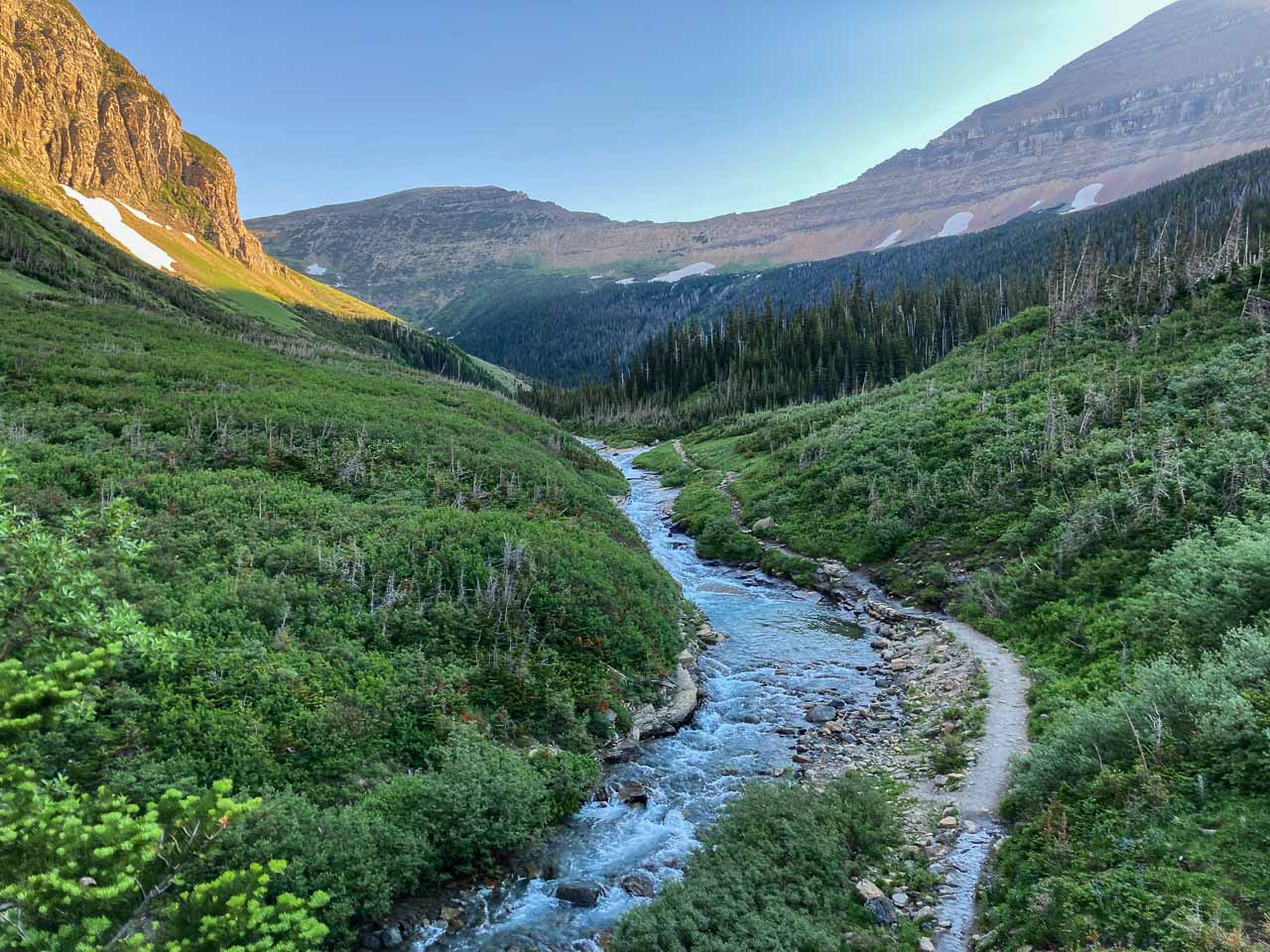
7. Glacier National Park, Montana
The spectacular mountains and valleys of Glacier National Park support a wide range of edible plants.
Just like in many other national parks, edible fruits, nuts and berries may be collected for personal use and consumption. You must gather them by hand, though. The use of rakes and other harvesting tools is prohibited. The foraging limit in Glacier is one (1) quart of edible plant materials per person per day.
Especially huckleberries are a staple in and around Glacier, as you’ll see on countless road signs and advertisements as you drive into the park. Other edible berries you can forage in Glacier National Park are thimbleberries, serviceberries, gooseberries and chokecherries.
It’s absolutely worth noting, however, that the “picking, gathering or harvesting of mushrooms is prohibited” within the national park.
See the Glacier National Park Superintendent’s Compendium for more information.
More About Glacier National Park
- Park Website
- Travel Guide
- Topographic Map
- Best Glacier Hikes
- Top Attractions on Going-to-the-Sun Road
- Accommodation
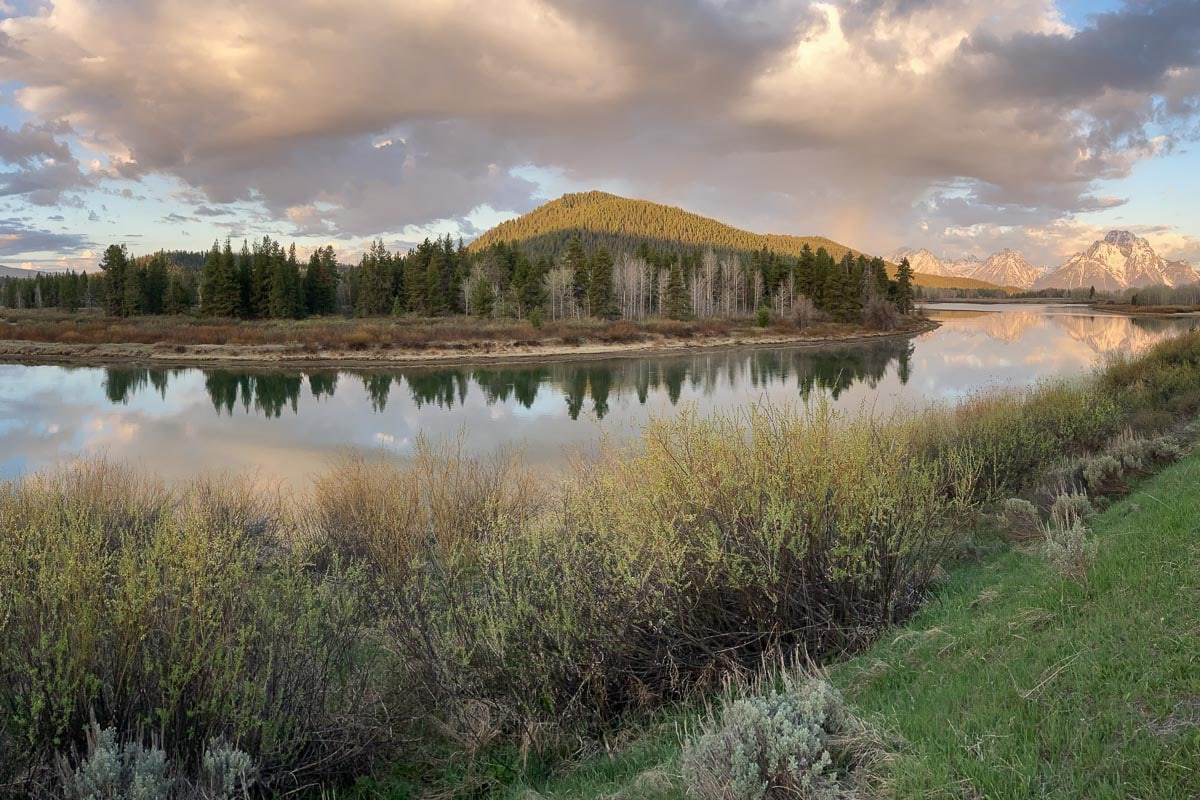
8. Grand Teton National Park, Wyoming
In Grand Teton National Park, you’re 100% allowed to go foraging for edible plants and fungi.
The park’s superintendent “has determined the collection and consumption of specified vegetation for immediate personal consumption is reasonable and will not adversely affect park wildlife, the reproductive potential of a plant species, or otherwise adversely affect park resources.”
Therefore, the gathering of all edible fruits, berries, nuts and mushrooms is permitted in both Grand Teton National Park and the adjacent John D. Rockefeller, Jr. Memorial Parkway. Those foods must, however, be consumed within the park. You may not take them outside of the park.
Remember that there’s a Grand Teton National Park foraging limit of one (1) quart per species per person per day.
See the Grand Teton National Park Superintendent’s Compendium for more information.
More About Grand Teton National Park
- Park Website
- Travel Guide
- Topographic Map
- Best Grand Teton Hikes
- Top Things To Do in Grand Teton National Park
- Where to See Bears in Grand Teton National Park
- Where to See Moose in Grand Teton National Park
- Names of the Teton Range Peaks (With Photos)
- Accommodation
9. Great Smoky Mountains National Park, North Carolina and Tennessee
One of the most biodiverse places in the world, Great Smoky Mountains National Park has an incredible abundance of edible plants and fungi. And the wonderful thing is that the park allows visitors to gather and collect almost all of them.
The Great Smokies are home to numerous mushroom species, many of them edible. All edible mushrooms in Great Smoky Mountain National Park may be collected, provided that they’re the fruiting bodies of fungi growing on soil or rotting logs on the ground. (Collecting mushrooms from standing trees, including dead standing trees, or fruiting bodies of fungi underground is not allowed.)
Additionally, mushroom foraging within Great Smokies National Park must also occur at least 100 feet from roads, parking and picnic areas, campgrounds and park buildings.
There’s a limit of one (1) pound of edible mushrooms per person per day, for all foraged mushroom species combined.
In terms of edible fruits, berries and nuts, Great Smoky Mountains National Park is a forager’s paradise.
The list of collectable plant materials is pretty impressive, including blueberries, strawberries, blackberries, elderberries, gooseberries, black raspberries, serviceberries, huckleberries, grapes, cherries, persimmons, black walnuts, red mulberries, hickory nuts, hazelnuts, apples, peaches and pears.
Up to one (1) pound per person per day may be collected for each species, except for apples, peaches and pears. Fruits, berries and nuts must also be collected beyond 200 feet from trails, roads, and scientific and natural study areas.
All foraging in Great Smoky Mountains National Park must occur by hand. It must be exclusively for personal use or consumption. Gatherers may not climb trees, use ladders or stools.
Essentially the only edible plant that may not be collected in Great Smokies is ramps.
See the Great Smoky Mountains National Park Superintendent’s Compendium for more information.
More About Great Smoky Mountains National Park
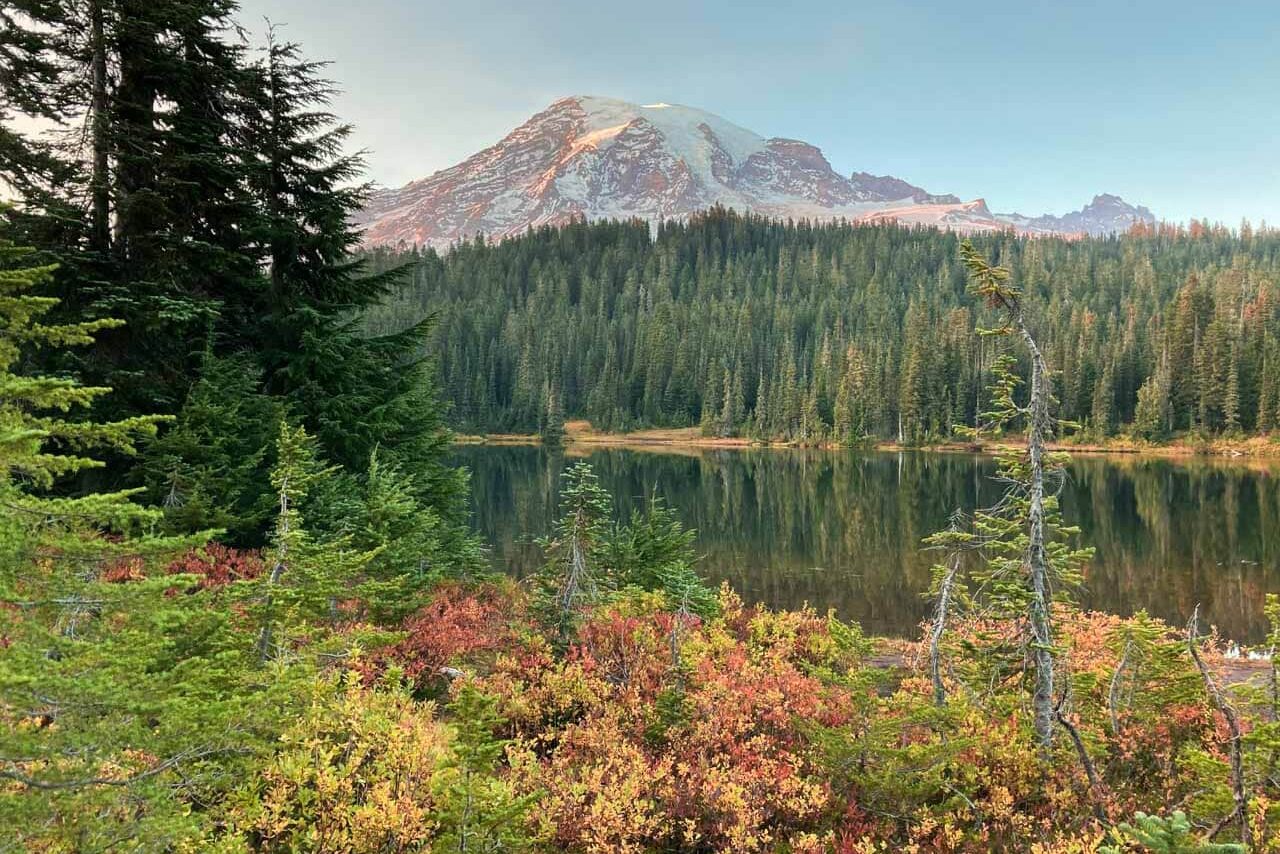
10. Mount Rainier National Park, Washington
One of my personal favorite U.S. national parks, Mount Rainier National Park is also one of the best national parks for foraging. In this beautiful mountain park, you can pick both berries and edible mushrooms by hand for personal use and consumption.
Mount Rainier is home to many kinds of delicious berries, including blueberries, blackberries, huckleberries, cranberries, salmonberries and gooseberries.
Especially the huckleberries are quite famous, not in the least because the Mount Rainier huckleberry bushes turn a glorious red in fall, giving the park its amazing fall colors. You can pick up to one (1) gallon of berries per person per day.
Mushrooms also abound in Mount Rainier National Park’s damp temperate forests, many of which are edible. Examples include hedgehog mushrooms, chanterelles, morels, matsutake, hen-of-the-woods and pig’s ear.
Just like berries, the foraging limit for edible mushrooms in Mount Rainier National Park is one (1) gallon per person per day. Great places for mushroom picking at Mount Rainier are trails in lowland forest areas like Longmire, Ohanapecosh and White River.
See the Mount Rainier National Park Superintendent’s Compendium for more information.
More About Mount Rainier National Park
- Park Website
- Travel Guide
- Topographic Map
- Best Mount Rainier Hikes
- Top Things To Do in Mount Rainier National Park
- Viewpoints
- Accommodation
11. New River Gorge National Park, West Virginia
The verdant Appalachian forests and river valleys of New River Gorge National Park produce a wealth of edible plants and mushrooms.
This is one of the best national parks for foraging because of its abundance of different fruits, nuts and mushrooms, as well as some of the highest allowed gathering quantities in the Park System.
In New River Gorge National Park, you may collect up to one (1) gallon per person per day of blueberries, blackberries, elderberries, gooseberries, huckleberries, raspberries, serviceberries, sumac berries, grapes, cherries and May apples.
The foraging limit for apples, peaches, pears, plums, persimmons and black walnuts is up to three (3) gallons per person per day.
If you’d like to collect edible mushrooms, you can harvest up to one-and-a-half (1 1/2) gallons per person per day.
See the New River Gorge National Park Superintendent’s Compendium for more information.
More About New River Gorge National Park
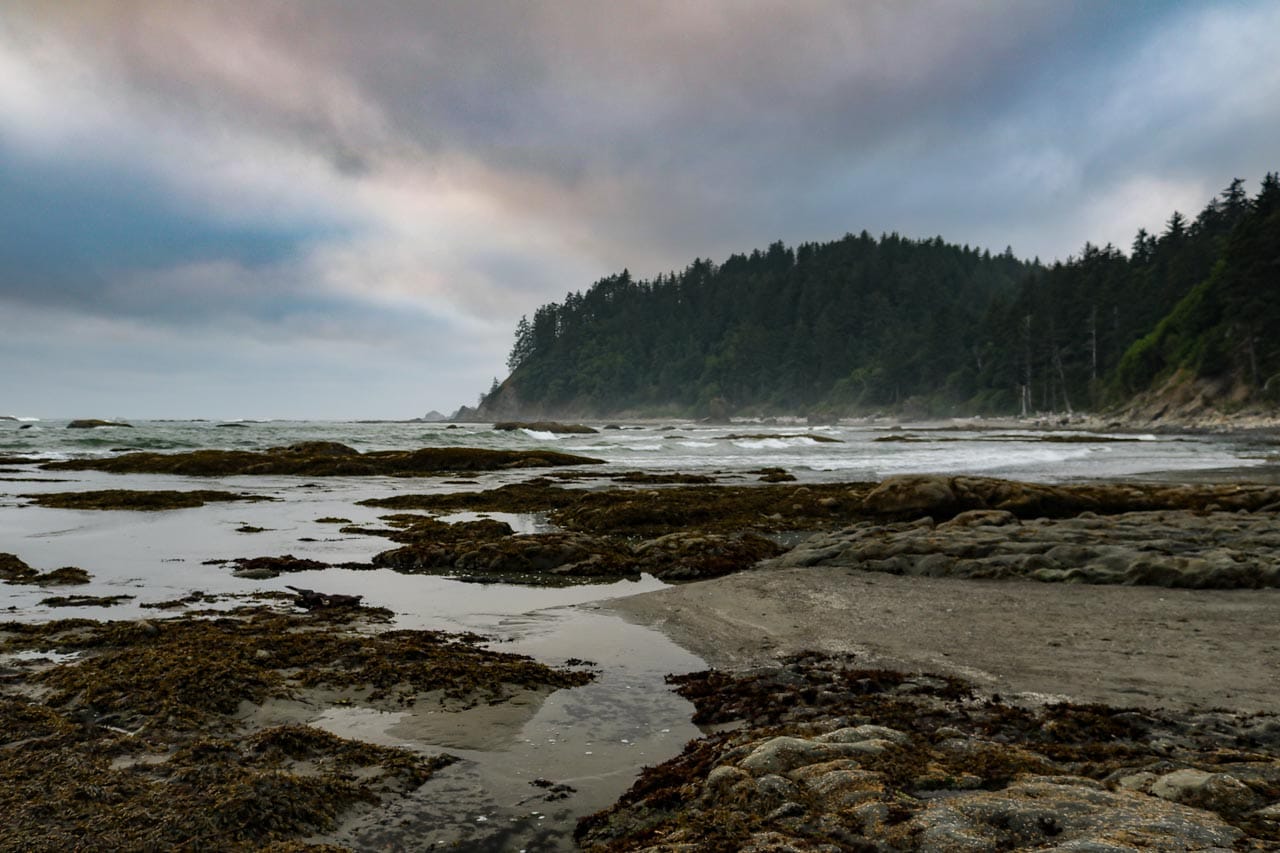
12. Olympic National Park, Washington
Often called “three parks in one,” Olympic National Park is an exceptionally diverse park. From the sea stack-lined coast to temperate rain forests, pristine lakes and towering Olympic Mountains, this is a region rich in fauna and flora.
In Olympic National Park, the foraging of edible fruits, berries, nuts and the fruiting bodies of mushrooms is allowed. Everything must be collected by hand. Additionally, foraging in Olympic National Park must occur at least 200 feet from nature trails, special trails and natural study areas.
You can pick up one (1) quart per person per day of edible fruits, berries, nuts and mushrooms.
There’s an exception for cranberries and native blackberries, though, which have a collection limit of three-and-a-half (3 1/2) gallons per person. Those latter two berries can only be collected once in a two-week period.
Exotic species like apples, pears and non-native blackberries do not have a quantity limit at all.
It’s worth noting that Olympic National Park also permits the collection of unoccupied seashells on its ocean beaches. The limit is a handful of seashells per person per park visit.
See the Olympic National Park Superintendent’s Compendium for more information.
More About Olympic National Park
- Park Website
- Travel Guide
- Topographic Map
- Best Olympic Hikes
- Top Things To Do in Olympic National Park
- Accommodation
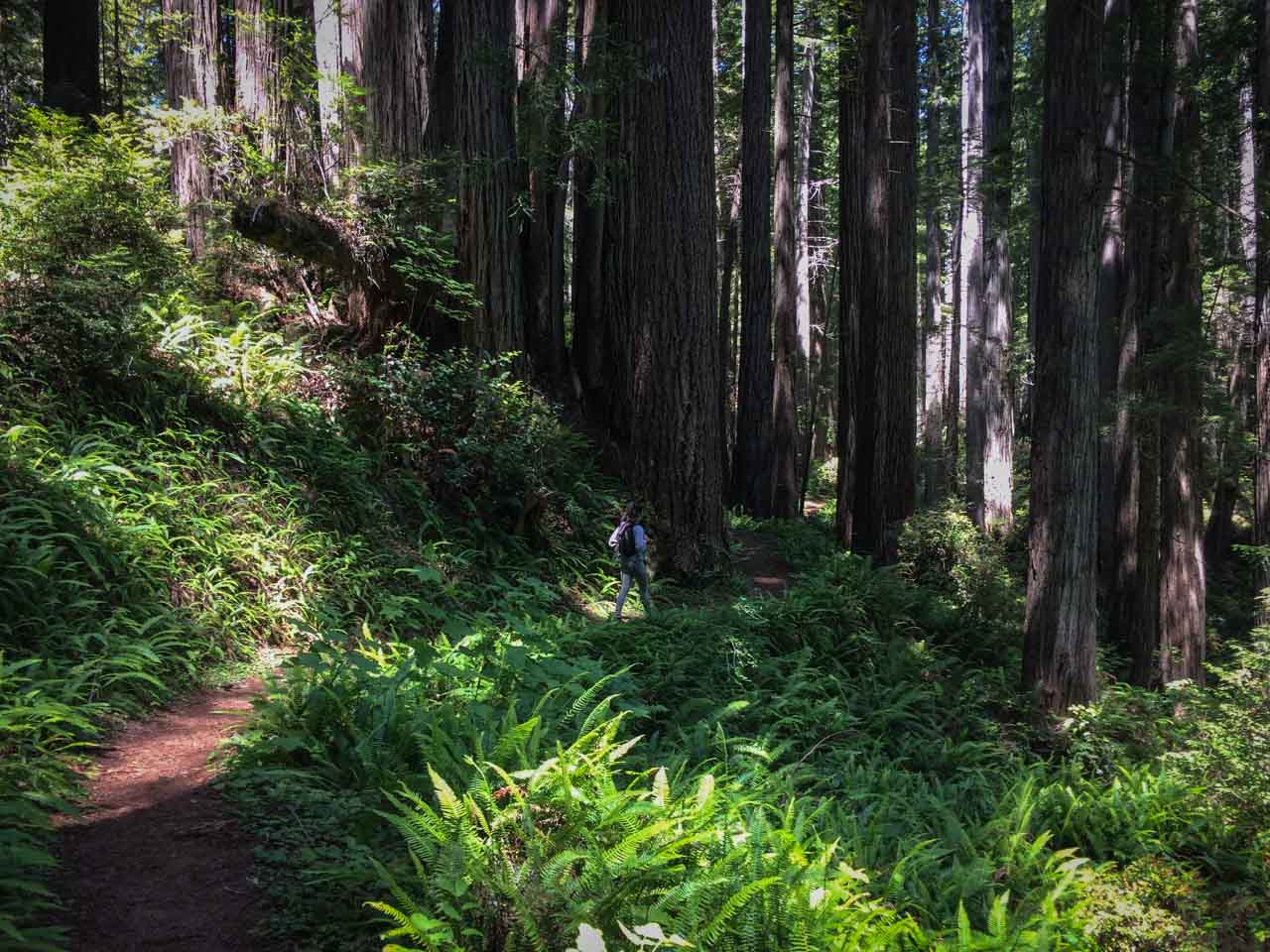
13. Redwood National Park, California
Just like most other Pacific Northwest national parks, Redwood National Park permits foraging. The park applies the usual regulations in that edible plant gathering must occur by hand and only for personal use and consumption.
In Redwood National Park, you can forage up to one (1) gallon per person per day of all species of edible berries. You may also pick up to five (5) apples per person per day.
The park also has an abundance of edible nuts visitors can collect. You’re allowed to gather up to one (1) gallon per person per day of hazelnuts and no fewer than ten (10) gallons per person per day of tanoak acorns.
On the beaches of Redwood National Park, unoccupied seashells may also be collected. The quantity limit for seashells is one (1) gallon per person per day. However, seashells collecting is prohibited above the Mean High Water Line.
See the Redwood National Park Superintendent’s Compendium for more information.
More About Redwood National Park
- Park Website
- Travel Guide
- Topographic Map
- Best Hikes
- Top Things To Do in Redwood National Park
- Accommodation
14. Rocky Mountain National Park, Colorado
While exploring the stunning mountainscapes of Rocky Mountain National Park, you can find a plethora of natural snacks in the wild. The park allows for the gathering of several edible fruits and berries, for up to one (1) quart per person per day for personal consumption.
In Rocky Mountain, you may pick blueberries, huckleberries, raspberries, red elderberries and strawberries, as well as chokecherries and rose hips.
Note, though, that mushroom hunting or consumption is strictly prohibited in Rocky Mountain National Park.
See the Rocky Mountain National Park Superintendent’s Compendium for more information.
More About Rocky Mountain National Park
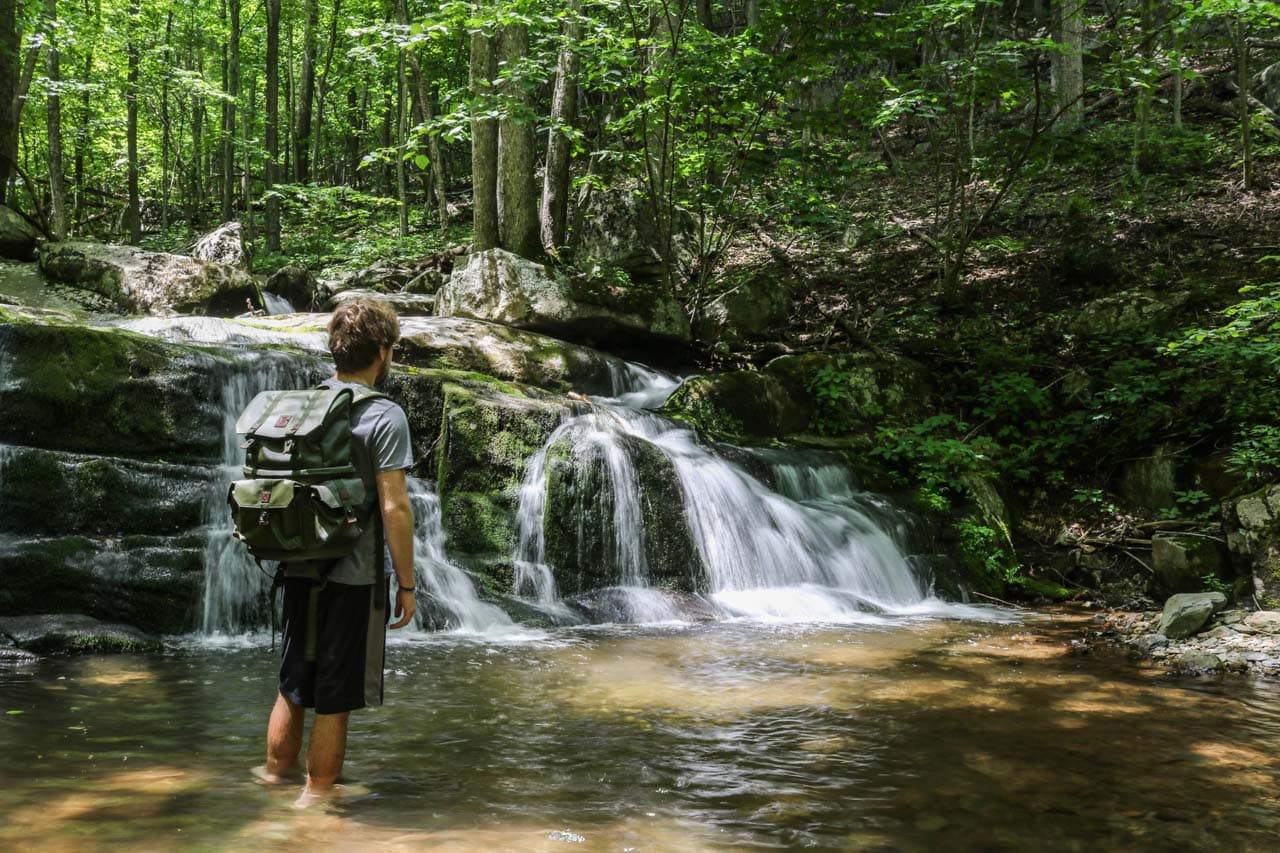
15. Shenandoah National Park, Virginia
The dense broadleaf forests, river valley and hollows of Shenandoah National Park are home to copious amounts of edible plants and fungi. This is easily one of the absolute greatest national parks for foraging, a Walhalla for pickers of wild edibles.
The list of edible fruits, berries, nuts and fungi you’re allowed to gather in Shenandoah National Park is impressively long.
You may gather up to one (1) gallon per person per day of blueberries, strawberries, elderberries, blackberries, wineberries, raspberries, gooseberries, huckleberries, serviceberries, cherries, currants, grapes, plums, persimmons, black walnuts, hazelnuts, hickory nuts and morel mushrooms.
For apples, peaches and pears, the foraging quantity limit is one (1) bushel, or eight (8) gallons, per person per day.
Additionally, you may collect up to one (1) quart per person per day of a combined total volume of all other edible fungi.
Again, you must gather all edible plant materials and mushrooms in Shenandoah National Park by hand for personal consumption or use.
See the Shenandoah National Park Superintendent’s Compendium for more information.
More About Shenandoah National Park
- Park Website
- Travel Guide
- Topographic Map
- Best Shenandoah Hikes
- Top Things To Do in Shenandoah National Park
- Viewpoints
- Accommodation
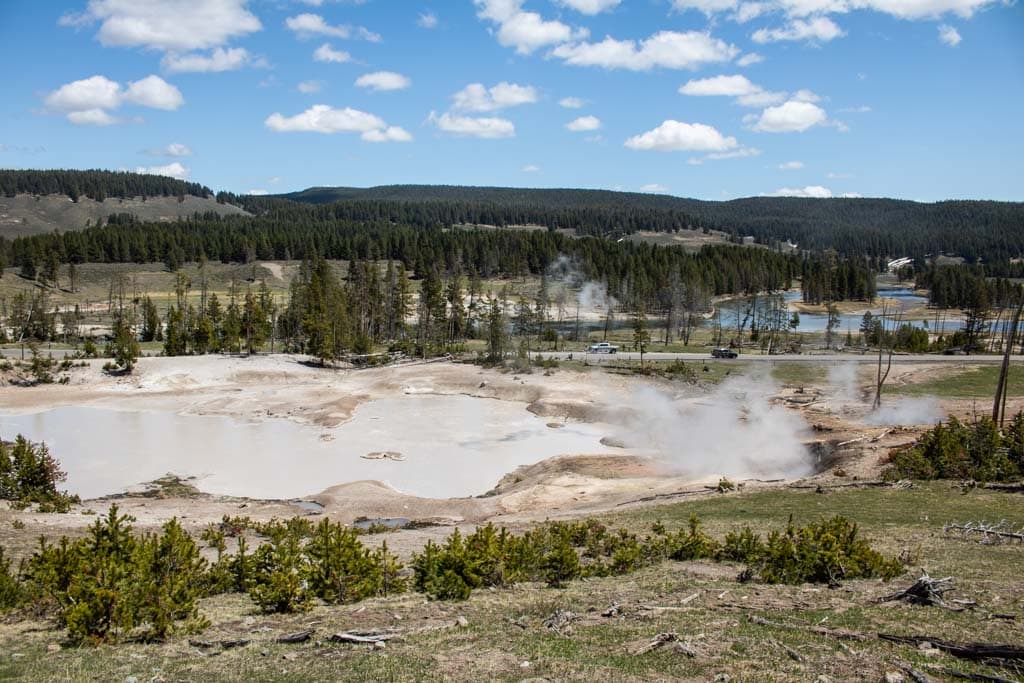
16. Yellowstone National Park, Idaho, Montana and Wyoming
Perhaps surprisingly, Yellowstone National Park with its strict preservation rules does allow for some foraging and collecting.
Yellowstone may not offer the extensive foraging opportunities that some other parks do have, but it’s still really nice to be able to collect some edible berries while exploring the world’s first national park. Additionally, picking edible mushrooms is also allowed in Yellowstone National Park.
Foraging limits for both berries and mushrooms are one (1) quart per species per person per day.
It’s also worth noting that the collection, possession and consumption of berries and mushrooms is restricted to Yellowstone National Park areas. In other words, you may not take anything outside of the park.
See the Yellowstone National Park Superintendent’s Compendium for more information.
More About Yellowstone National Park
- Park Website
- Travel Guide
- Topographic Map
- Top Things To Do in Yellowstone National Park
- Best Spring Hikes in Yellowstone
- Accommodation
17. Yosemite National Park, California
Popular Yosemite National Park allows visitors to pick edible berries where they find them, but only for immediate consumption.
You can pick up to one (1) pint per person per day of blackberries, raspberries, strawberries, elderberries, huckleberries and thimbleberries. For Himalayan blackberries, there’s no foraging limit.
Edible fungi may be harvested in Yosemite National Park for immediate consumption, too. The quantity limit for fungi is also one (1) pint per person per day. Note that mushrooms must be cut, not pulled.
While you must consume all berries and mushrooms you forage in Yosemite National Park on the spot, you can take apples and pears from the collection site, but only for personal consumption.
See the Yosemite National Park Superintendent’s Compendium for more information.
